
Ripe and unripe Passiflora lutea fruit. Some passion fruit are edible, most are not. Photo by Green Deane
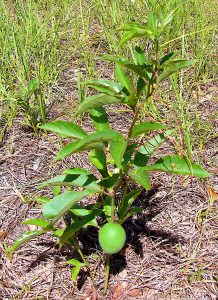
Passiflora incarnata and unripe fruit. Photo by Green Deane
There are several “edible” Passiflora locally but only a couple worth eating in my tender-tummy opinion: P. incarnata and P. foetida. They both have a tart-sweet flavor and the entire fruit is edible, seeds, pulp and skin. I have eaten both but not in huge quantities, usually one or two at a time. A couple that are marginal are P. lutea and P. suberosa. I see P. lutea often but not P. suberosa which tends to grow further north. During a foraging class this week in Sarasota we saw P. lutea and it was fruiting. Don Porta, mentioned below, tasted it and described it as “interesting.” I would call that being generous. Maybe cooked into a jelly or a juice they might improve. I am a bit concerned that I have seen some websites say P. lutea leaves can be used medicinally like P. incarnata. I would question that though I am not an herbalist nor a chemist (they would not let me take chemistry in school.) But I seem to remember a study that tested numerous Passifloras and reported they all had some cyanide in their leaves except the P. incarnata which has GABA instead (gamma amino-butryc acid.) It was the only one, in the study at least, that did not have cyanide in its leaves and was specifically singled out. I would be careful about using any Passiflora leaves other than P. incarnata without thorough research first. Also avoid unripe fruit. One species, Passiflora adenopoda, from China, is definitely fatal. You can read about Passifloras here.
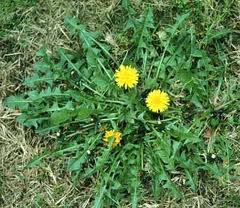
Dandelions are a common green.
If you do much foraging one soon learns that most of the wild edibles we harvest are “greens.” There are roots, fruit and nuts as well but about 90% of the forageables fall in the category of “greens.” That is not a complaint but rather an observation. In the world of food things that move under their own power — animals — are the most nutrient dense. Plants are definitely second. In Australia, where there are Aboriginals who still hunt and gather food in traditional ways, roughly two thirds of their diet is creatures and one third plants. As foragers we can get a good amount of calories from roots and nutmeats. The latter have oils and some protein. Natural fruits are usually less sweet than their cultivated cousins but they do provide colorful and health-promoting phytochemicals and anti-oxidants. All that said we should not dismiss greens as bottom of the nutritional barrel. In the middle of the chlorophyl molecule is magnesium. That element is necessary for some 325 metabolic processes in the body More to the point it’s estimated that 85% of Americans are chronically deficient in magnesium and the rest are not overdosing on it either. Thus mom was right: Eat your vegetables including the green ones.
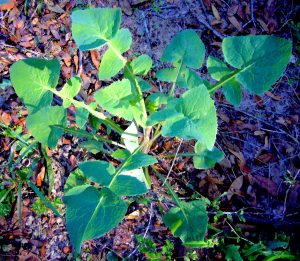
The Common Sow Thistle is a tasty green.
A January 2018 article in the British Medical Journal calls magnesium deficiency a public health crisis that is driving many diseases ranging from heart disease to osteoporosis even diabetes. How does that happen? It’s call the nutritional triage theory. If you are low on magnesium — or any essential nutriment — the body uses what it has for essential functions such as staying alive (id est breathing, pumping blood, maintaining body temperature et cetera.) Next in line is keeping reproduction status ready. Daily repairs for long-term survival get put off. And when enough of those repairs are put off long enough that causes problems sometimes dramatically increasing disease rates (although even children are now showing the effects of low-magnesium diets.) The take away is eat your greens, better still eat wild greens. Why? Because there has been a drop in magnesium content in food crops because of soil depletion and farming techniques. The journal reports that since 1940 there has been a tremendous decline in overall micronutrient density of food either by depletion or refining. Flour today, for example, has 82% less magnesium than it used to, polished rice -83%, sugar -99%, cheddar cheese -38%, vegetables in general -24% whole milk -21%, and bacon -18%. Interestingly one of the problem is caused by unbalanced crop fertilization: High levels of nitrogen, phosphorus and potassium reduces absorption of magnesium in plants.
So while some might complain that “greens” are the majority of wild plants we forage those ‘greens” carry a micronutrient that we are becoming increasingly deficient in. I think I’ll go steam up a side dish of False Hawks Beard… or Dandelions… maybe or Sow Thistle or…

Foraging classes are held rain, shine, hot or cold. Photo by Nermina Krenata
Foraging Classes: Classes are light this his month because I’m teaching at two conferences, one this weekend in Hawthorn, Florida. And since I am in the area I will be having a class in Ocala this Sunday. See directly below.
Sunday, February 11th, Jervey Gantt Recreation Complex, 2390 SE 36th Ave., Ocala, FL, 34471. 9 a.m. Meet at the entrance to the pool, aka Aquatic Fun Center.
Saturday, February 17th, Wickham Park: 2500 Parkway Drive, Melbourne, FL 32935-2335. 9 a.m. Meet at the “dog park” inside the park.
Sunday, February 18th, Blanchard Park, 10501 Jay Blanchard Trail, Orlando, FL 32817. 9 a.m. Meet at the Pavilion east of the tennis courts near the YMCA.
Sunday, March 4th, Eagle Park Lake, 1800 Keene Road, Largo, FL 33771. 9 a.m. Meet at the pavilion by the dog park.
For more information about the foraging classes go here.
 Donations to upgrade EatTheWeeds.com are going very well. Thank you to all who have contributed to either via the Go Fund Me link or by the PayPal donation link. The fund has already started paying down the cost of the first phase of upgrades started in September. The site went down just before Hurricane Irma and was off line for about a month. When it came back with a new look many features were not functioning. Some are still buggy such as updating the ARCHIVE section. ETWs itself has been up for over a decade and the operating system was older than that. Many of the adds-ons and plug-ins were no longer working so it needed a major overhaul. The site’s content itself took many years to create. It contains information about over a thousand of edible plants. The site has 145 related videos which are currently on You Tube. Hopefully they can be moved back to the site. The Green Deane Forum has some 12,000 posts with plans to expand. The goal is to upgrade more, do more videos and get a book published. I also want to get the site in shape so I can will it to some organization that can own and maintain it when I’m long gone. You can go to the Go Fund Me page here, or, if you want to use PayPal instead you can use this link.
Donations to upgrade EatTheWeeds.com are going very well. Thank you to all who have contributed to either via the Go Fund Me link or by the PayPal donation link. The fund has already started paying down the cost of the first phase of upgrades started in September. The site went down just before Hurricane Irma and was off line for about a month. When it came back with a new look many features were not functioning. Some are still buggy such as updating the ARCHIVE section. ETWs itself has been up for over a decade and the operating system was older than that. Many of the adds-ons and plug-ins were no longer working so it needed a major overhaul. The site’s content itself took many years to create. It contains information about over a thousand of edible plants. The site has 145 related videos which are currently on You Tube. Hopefully they can be moved back to the site. The Green Deane Forum has some 12,000 posts with plans to expand. The goal is to upgrade more, do more videos and get a book published. I also want to get the site in shape so I can will it to some organization that can own and maintain it when I’m long gone. You can go to the Go Fund Me page here, or, if you want to use PayPal instead you can use this link.
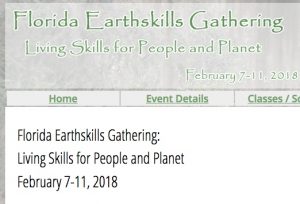
2018 Earthskills in Hawthorne Florida.
There are two conferences this month one this week. Earthskills runs for several days in Hawthorn, Florida. There are a wide variety of classes to attend and a lot of camaraderie. I lead a class there Friday and Saturday afternoons. You can still register on line at Earthskills here.
In two weeks there is the Florida Herbal Conference., Feb 23-25. Keynote speakers this year are Linda and Luke Black Elk from the Standing Rock Reservation. Linda (of the Catawba Nation) is an ethnobotanist specializing in teaching about culturally important plants and their uses as food and medicine. She is a lecturer at Sitting Bull College in Fort Yates, North Dakota. Luke Black Elk (Thít?u?wa? Lakota) is a storyteller, grassroots activist, and traditional spiritualist. He has conducted research in water restoration, sustainable building design, and food sovereignty, and hopes to use these techniques to encourage a more traditional way of life among his people. Luke has lived on the Cheyenne River Sioux Reservation his entire life, becoming deeply involved in cultural and community activities. For more information about the Florida Herbal Conference go here.
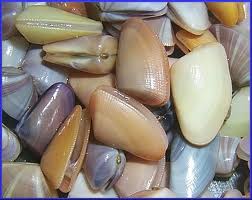
Coquina: Small clam, huge flavor.
Sometime instead finding answers they find you. As you know there are several articles on the EatTheWeeds website that are about edibles covered by the subtitle: And other things, too. That subtitle was intentionally added when the site went up more than a dozen years ago. There are a lot of things in the world to eat. Before Andrew Zimmern was traipsing around the globe for the Travel Channel eating untraditional food EatTheWeeds was writing about them. As one might expect that has caused a good amount of disagreeing mail. Many people keep as pets creatures that others eat. Thus far, however, no one has complained about Coquina, a coastal clam that’s about the size of your fingernail. The tiny clams make an absolutely delicious green broth that I like to add — I know it’s sacrilege — instant potatoes and butter to. One of the down sides is that the clams are so small getting the meat out of the shell is microscopic work. That is so frustrating most of it is tossed away. However in Australia they figured out a commercial way of separating meat and shell. How that was done was something of a mystery until a post on the Green Deane Forum. The cooked shells are vigorously stired. After that it is a matter of straining the shells from the meat. I’ve got to try that. In fact we chatted about Coquina and Mole Crabs after our foraging class Sunday in Sarasota. You can read about Coquina here, and crunchy Mole Crabs, here.

Green Deane Forum
Want to identify a plant? Looking for a foraging reference? Do you have a UFO, an Unidentified Flowering Object you want identified? On the Green Deane Forum we chat about foraging all year. And it’s not just about warm-weather plants or just North American flora. Many nations around the world share common weeds so there’s a lot to talk about. There’s also more than weeds. The reference section has information for foraging around the world. There are also articles on food preservation, and forgotten skills from making bows to fermenting food. One special section is “From the Frightening Mail Bag” where we learn from people who eat first then ask questions later. You can join the forum by clicking on “forum” in the menu.
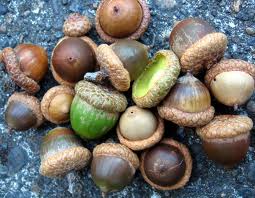
Acorns depend on a wet spring.
Many people are surprised to learn most acorns are edible if processed. They were a staple for many native groups who had a wide variety of ways to make them palatable. The amount of acorns a tree produces — called a mast — is effected by weather specifically temperatures, rain and wind. Setting aside temperatures and wind for a moment the amount of spring rain affects the mast. Usually a wet spring means more acorns. But you also need some dry days at the right time to wind-carry the pollen around. Winds distribute that pollen for miles around. Bees do visit oaks blossoms but they are considered a minor pollinator. Throwing a kink in this are temperatures. There are about a dozen different species of oaks locally and they usually don’t all pollinate at the some time unless the weather has been cold. That forestalls some species from pollinating creating more species pollinating at the same time. They wait for warmer weather and that translate into higher amounts of pollen than usual. This is very bad news locally for those who are allergic to oak pollen. Dr. Richard Lockey of the University of South Florida in Tampa says this oak allergy season could be particularly rough. “When it goes this year it will go very quickly and very high because we’ve had such cold weather…” he said. When will it end? Sometime in April which means a really bad March and perhaps part of February. You can read about acorns here.
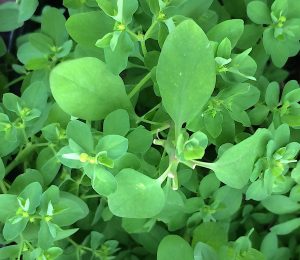
Radium Weed, Euphorbia peplus. Photo by Green Deane
Non-edibles are not covered often in these newsletters or the related website because it is after all Eat The Weeds and I am not an herbalist. But weeds are related to herbalism (see the two conferences this month.) At our foraging class in Sarasota Sunday Don Porta brought for show and tell some Radium Weed, Euphorbia peplus. The species is originally from Europe and thus got to places like Australia. There it is classified as a noxious weed but much used for treating skin cancer such as basal cell, squamous cell and intraepidermal carcinomas. Radium Weed is reported sporadically in the United States such as in one county in each of these states: Louisiana, Tennessee, North Carolina, Kentucky, Colorado, and Illinois. It’s more common in some states and regionally such as in Southern California. The white sap of the plant is put on skin lesions daily for three days and is as effected as other nonsurgical intervention. In fact in the March 2011 edition of the British Journal of Dermatology it was reported that in a study using 36 patients “the sap from Euphorbia peplus is effective against human nonmelanoma skin cancers.” The active ingredient was identified as Ingenol Mebutate. That’s also the main active ingredient in a pharmaceutically prepared cream for the same use called Picato Gel. There is some controversy.
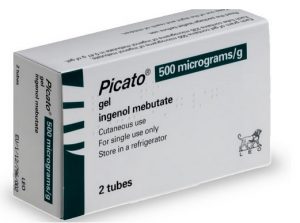
Picato Gel
The FDA warned in 2015 that Picato Gel can have serious side effects such as allergic reactions and shingles. More common, though, are people applying it, getting some on their fingers then touching their eyes. People who did not wash their hands thoroughly later had issues when applying makeup or inserting contact lenses. I could not find any follow up on the 2015 report of shingles being related to the medication’s use. Might it have been a coincidence? As to why would folks use the sap directly from the plant rather than buy the preparation? Depending upon the amount of Ingenol Mebutate in the preparation a package of two tiny tubes costs from about $700 to $1,200 per prescription. Perhaps the lesson is the plant is powerful medicine and needs to be used carefully… and we should also question why six drops of sap from a plant that is very easy to grow costs $1,200.

Green Deane DVD Set
All of Green Deane’s videos available for free on You Tube. They do have ads on them so every time you watch a Green Deane video I get a quarter of one cent. Four views, one cent. Not exactly a large money-maker but it helps pays for this newsletter. If you want to see the videos without ads and some in slightly better quality you can order the DVD set. It is nine DVDs with 15 videos on each for a total of 135 videos. Many people want their own copy of the videos or they have a slow service and its easier to order then to watch them on-line. The DVDs make a good gift for that forager you know especially on long, cold winter months. Individual DVDs can also be ordered or you can pick and choose. You can order them by clicking on the button on the top right hand side of this page (if your window is open wide enough.) Or you can go here.
This is weekly issue 290. (And a local note for those who live in southern Volusia County. There’s a lot stinging nettle growing there at Becks Ranch Preserve around the pavilion.)
If you would like to donate to Eat The Weeds please click here.
There are at least five edible wild species in this photograph.

Can you name the wild edibles in this photo?


Hey that was taken in my yard!! lol
cucumber vine, carmelina (sp?), bida alba
So it was…. Yep, cucumber vine, a Commelina, Bidens alba, dollar weed and upper left, West Indian Chickweed